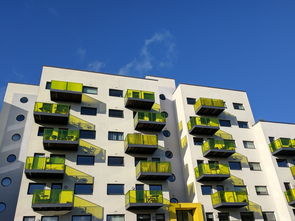Mastering the Language of Modern Architecture: A Journey Through Innovative Designs and Global Perspectives
As a renowned contemporary architecture master, I have spent my life navigating the intricate tapestry of design and construction, weaving together the language of the past with the cutting-edge technologies of the present. The world of architecture is not just about concrete structures and aesthetic allure; it's a symphony of cultural expressions, environmental sustainability, and technological prowess. In this discourse, I will delve into how we communicate these ideas through the complex art of spelling in the English language.
The first step in understanding architectural language is to grasp the correct spelling. "Architecture" itself, as an noun, is spelled with a hyphen between the "ar" and the "-chitecture." It's a term that emphasizes the harmony of form and function, reflecting the essence of our craft. "Modernism," on the other hand, is spelt with a double "m" to convey its departure from traditional styles and embrace innovation.
Each building is a story, and the language of its design should reflect that. The "Guggenheim Museum Bilbao," designed by Frank Gehry, exemplifies this with its undulating titanium shells, spelling out a narrative of fluidity and transformation. "The Falling Water" by Frank Lloyd Wright, a masterpiece of organic architecture, is a testament to the beauty in precise, unconventional spellings like "falling" instead of "fallen."
Sustainability, a key aspect of contemporary architecture, is often spelled with care. Terms like "green" (as in "green building") and "sustainable materials" require understanding to avoid confusion. The importance of energy efficiency and eco-friendly practices is not just in the name, but also in the execution.
Geography too shapes architectural language. A "London Skyline" is distinct from that of New York or Tokyo, and so are the spellings that represent them. The "skyscrapers" of Manhattan, "towers" in London, and "bustling" urban landscapes each have their unique architectural language.
The language of lighting, shadows, and natural ventilation in a building is just as critical as the material choices and structural integrity. Terms like "daylighting," "ventilation策略" (strategies for ventilation), and "光影设计" (lighting design) require precision in their spelling.
Lastly, the role of technology in architecture is increasingly complex. "BIM (Building Information Modeling)" and "smart buildings" are terms that require a technical vocabulary, where "3D printing" and "augmented reality" are not just buzzwords, but integral to the design process.
In conclusion, the spelling of architectural language is not only about adhering to rules but also about capturing the essence of the idea being communicated. As a master, it's not just about designing buildings; it's about deciphering the language of our profession, crafting structures that speak volumes about the times we live in.
In today's globalized world, architects must be proficient in multiple languages, not just the written English. This includes understanding the complexities of local codes, regulations, and cultural nuances. So, every time we choose a particular word, we are crafting a piece of architectural poetry, one that could change the way people see and interact with their surroundings.
Through our designs, we not only build structures but also create a language that transcends boundaries and echoes through the ages, shaping the cities of tomorrow.











